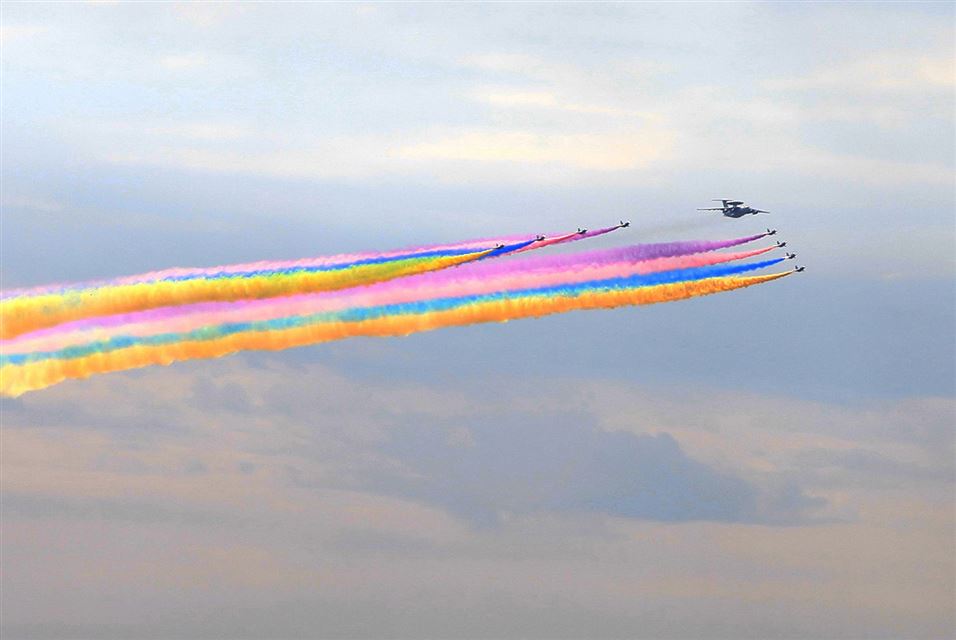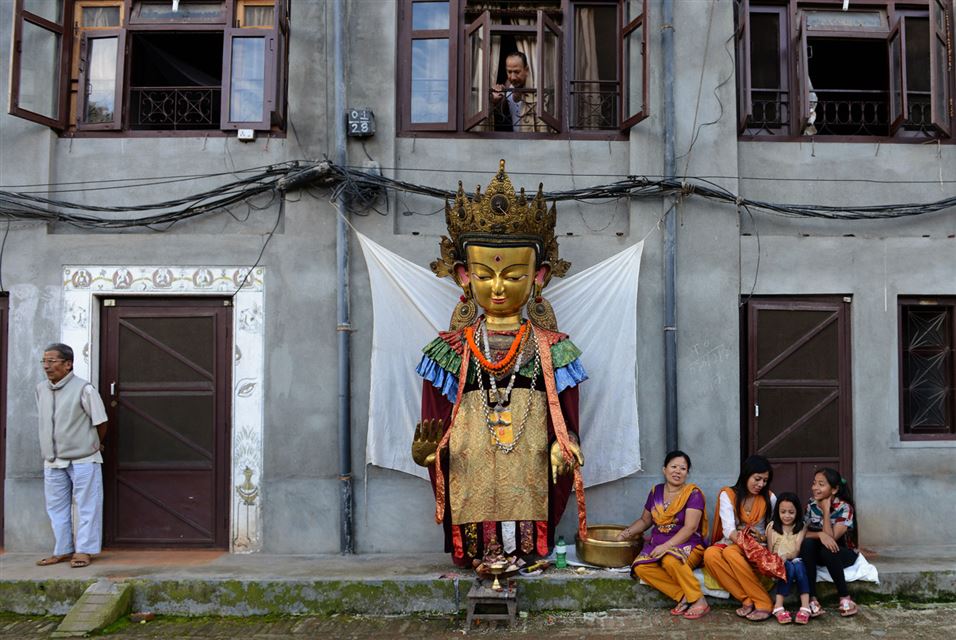
The Creative Apocalypse That Wasn’t
In the digital economy, it was supposed to be impossible to make money by making art. Instead, creative careers are thriving — but in complicated and unexpected ways.
|\| ART BLOG HUMOR BLOG PHOTO BLOG CULTURE BLOG |:| FOR THE RENAISSANCE MAN & THE POLYMATH WOMAN |/|




Indeed, if, simplistically put, the modern outlook vis-à-vis idealism and ideals could be characterized as fanatic and/or naive, and the postmodern mindset as apathetic and/or skeptic, the current generation’s attitude — for it is, and very much so, an attitude tied to a generation —can be conceived of as a kind of informed naivety, a pragmatic idealism.






| Cause Collective: In search of the truth (The Truth Booth) presented in New York | ||
 |






| The First Art Newspaper on the Net | Established in 1996 | Portugal | Monday, August 24, 2015 |
| The First Art Newspaper on the Net | Established in 1996 | Portugal | Monday, August 24, 2015 |
| Islamic State militants blow up temple in Syria's Palmyra: Syria's antiquities chief | ||
 |
DAMASCUS (AFP).- Islamic State militants on Sunday blew up the ancient temple of Baal Shamin in the UNESCO-listed Syrian city of Palmyra, an official said, the latest in a series of cultural relics to be destroyed by the jihadist group.
Famed for well-preserved Greco-Roman ruins, Palmyra was seized from government forces in May, fuelling fears the IS jihadists might destroy its priceless heritage as it had done in other parts of Syria and Iraq. Until Sunday, most of Palmyra's most famous sites had been left intact, though there were reports IS had mined them and the group reportedly destroyed a famous statue of a lion outside the city's museum. "Daesh placed a large quantity of explosives in the temple of Baal Shamin today and then blew it up causing much damage to the temple," Syria's antiquities chief Maamoun Abdulkarim told AFP, using another name for IS. "The cella (inner area of the temple) was destroyed and the columns around collapsed," he said. The Syrian Observatory for Human Rights, a Britain-based group that monitors the country's civil war, confirmed the destruction of the temple. IS, which controls swathes of Syria and neighbouring Iraq, captured Palmyra on May 21, sparking international concern about the fate of the heritage site described by UNESCO as of "outstanding universal value". Pearl of the desert Baal Shamin was built in 17 AD and it was expanded under the reign of Roman emperor Hadrian in 130 AD. Known as the "Pearl of the desert", Palmyra, which means City of Palms, is a well-preserved oasis 210 kilometres (130 miles) northeast of Damascus. Its name first appeared on a tablet in the 19th century BC as a stopping point for caravans travelling on the Silk Road and between the Gulf and the Mediterranean. But it was during the Roman Empire -- beginning in the first century BC and lasting another 400 years -- that Palmyra rose to prominence. Before the arrival of Christianity in the second century, Palmyra worshipped the trinity of the Babylonian god Bel, as well Yarhibol (the sun) and Aglibol (the moon). IS had mined the ancient site in June before destroying the Lion Statue of Athena -- a unique piece made of limestone that stood more than three metres high (10 feet) that stood outside a museum. Funerary busts were also destroyed by IS in Palmyra. Most of the pieces in the museum were evacuated by antiquities staff before IS arrived, though the group has blown up several historic Muslim graves. IS's harsh version of Islam considers statues and grave markers to be idolatrous, and the group has destroyed antiquities and heritage sites in territory under its control in Syria and Iraq. The latest developments come just days after IS jihadists beheaded the 82-year-old retired chief archaeologist of Palmyra. IS has also executed hundreds of people in the city and surrounding area, many of them government employees, and infamously used child members to shoot dead 25 Syrian government soldiers in Palmyra's ancient amphitheatre. "Our darkest predictions are unfortunately taking place," said Abdulkarim. The jihadists "carried out executions in the ancient theatre (of Palmyra), they destroyed in July the famous Lion Statue of Athena... and transformed the museum into a prison and a courtroom." © 1994-2015 Agence France-Presse | |
| Islamic State group mutilated body of famed Syrian archeologist Khaled al-Assaad: Family | ||
 DAMASCUS (AFP).- Islamic State group jihadists mutilated the body of a famed Syrian archaeologist after killing him execution-style in the ancient city of Palmyra last week, his family said Sunday. Khaled al-Assaad, Palmyra's antiquities chief for 50 years, was on Tuesday beheaded by IS militants who tied his body to a post before hanging it in the city's ruins, amid international outrage. "Residents of Palmyra told me that IS had cut up my father's body into pieces," said Mohammad al-Assaad, one of Khaled's sons, said at a wake held Sunday at Damascus National Museum. "My father used to always say, 'I'll die standing up, like the palm tree of Palmyra,'" Mohammad told AFP. He added that despite threats from jihadists, his father had refused to leave Palmyra. Syria's national antiquities chief Mamoun Abdulkarim gave a similar account. "Khaled's cousins, who also work in antiquities, told me that the group removed his body from the pole and mutilated it," said Abdulkarim. Omar al-Assaad, another of Khaled's sons, said his father had attempted to hide from IS in Palmyra after the jihadists overran the city on May 21. But Khaled and his son Walid, the current head of antiquities in Palmyra, were detained by IS and questioned about stores of gold and artefacts. Though they released them both after one week, the jihadists later recaptured the 82-year old chief archeologist. The family was shocked to see him dragged out to Palmyra's public square to be murdered, Omar said. The family fled to the government-controlled city of Homs, and then on to Damascus. The killing is one of hundreds that have been carried out by IS in and around Palmyra, a UNESCO world heritage site famed for its well-preserved Greco-Roman ruins. So far, Palmyra's most famous sites have been left intact, though there are reports IS has mined them, and the group reportedly destroyed a famous statue of a lion outside the city's museum in June. Most of the pieces in the museum were evacuated by antiquities staff before IS arrived, though the group has blown up several historic Muslim graves. © 1994-2015 Agence France-Presse |